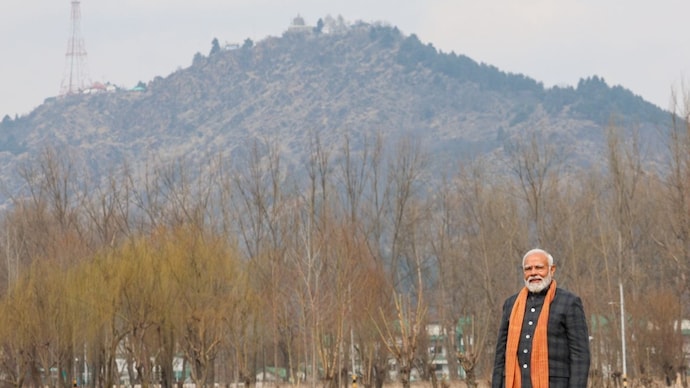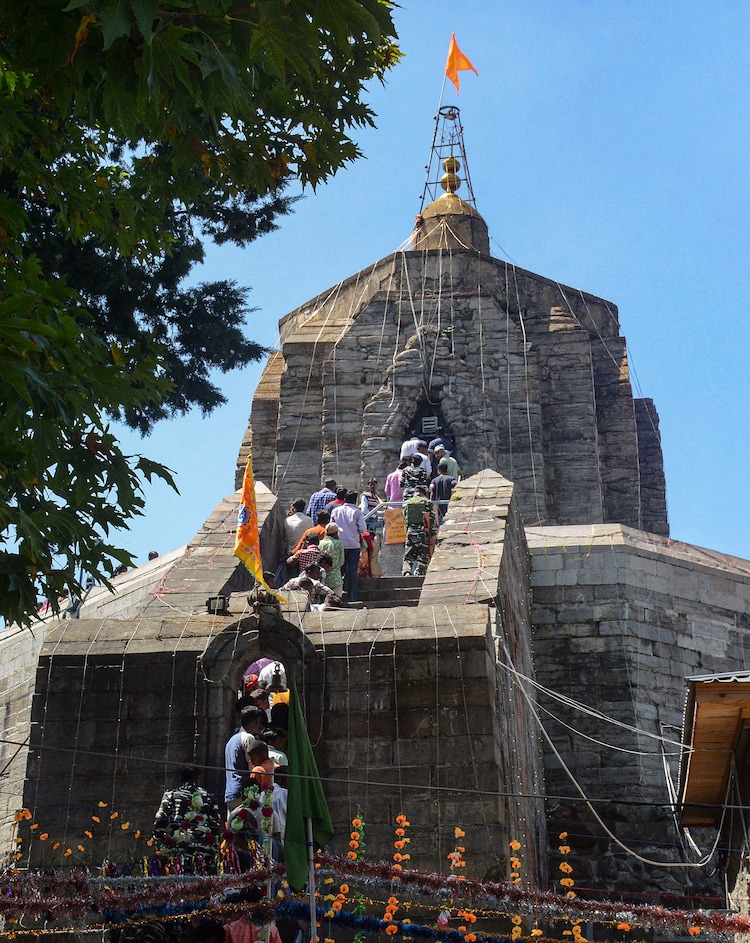The story of 'majestic' Shankaracharya Hill PM Modi bowed to in Kashmir
PM Modi, after landing in Srinagar, bowed down to the Shankaracharya Hill from a distance. The Shankaracharya Hill houses the famous Shankaracharya Temple, which is Kashmir's oldest Hindu shrine.

South of the famous Dal Lake in Srinagar lies the iconic Shankaracharya Hill, which Prime Minister Narendra Modi talked about after he landed in Srinagar on Thursday, March 7.
"Upon reaching Srinagar a short while ago, I had the opportunity to see the majestic Shankaracharya Hill from a distance," PM Modi wrote on X.
PM Modi landed in Srinagar to inaugurate development projects worth Rs 5,000 crore and would also attend the 'Viksit Bharat, Viksit Jammu Kashmir' programme.
This also marks the Prime Minister's first visit to Srinagar after Article 370 was scrapped and the erstwhile state of Jammu and Kashmir was downgraded to a Union territory in 2019.
PM MODI BOWS TO SHANKARACHARYA HILL
After landing at a helipad near the Shankaracharya Hill, PM Modi posted a few pictures of him folding hands and bowing before the "majestic Shankaracharya Hill".
One must be wondering why the Prime Minister would fold his hands in front of a hill. Well, the answer lies in the name of the hill itself, 'Shankaracharya Hill'.
SHANKARACHARYA TEMPLE, KASHMIR'S OLDEST TEMPLE
The Shankaracharya Hill, also known as Gopadri, Sandhimana-parvat, Koh-e-Suleman, and Takht-i-Sulaiman, shrines Kashmir's oldest temple, dedicated to Lord Shiva.
"The Shankaracharya Temple is the oldest temple in Kashmir, both in appearance and according to traditions," according to Alexander Cunningham's 1848 "Essay on the Arian order of Architecture, as exhibited in the Temples of Kashmir".
The Shankaracharya Temple is also revered as the most sacred shrine in Kashmir and is flocked by pilgrims and devotees, especially during festivals such as Mahashivaratri, locally known as Herath.
SHANKARACHARYA TEMPLE's HISTORY
The temple got its name from the visit of the 8th-century philosopher and saint Adi Shankaracharya, who visited the Kashmir valley, according to local legends. It is believed that Shankaracharya, to revive Hinduism and unify various schools of thought, visited Kashmir to advance Vedantic knowledge.
The Shankaracharya Hill and the temple, since then, have been a symbol of his teachings and philosophy.
The erection of the temple is attributed to Jaloka, the son of the Mauryan Emperor Asoka, according to Alexander Cunningham.
The earliest written references to the hill trace back to Kalhana, a 12th-century scholar, who called it 'Gopadri' or 'Gopa Hill'. King Gopaditya (426-365 BC) granted land at the foot of the hill to Brahmins from "Aryadesa", establishing an agraharam called 'Gopa Agraharas', according to Kalhana.
Agraharam in Sanskrit refers to land donated to Brahmins without a lease.
The temple itself has a storied history and is believed to have been constructed around 371 BCE as a shrine to Jyesthesvara, a form of Lord Shiva, by King Gopaditya, according to Kalhana's book, 'Rajatarangini, a chronicle of the kings of Kashmir'.
Over the centuries, the Shankaracharya Temple has seen many reconstructions and renovations, notable ones being carried out by King Lalitaditya in the 8th century and Gulab Singh of the Dogra dynasty renovating the Durga Naag shrine in the Shankaracharya temple premises.
The temple also saw an upgrade by Krishna Raja Wadiyar IV of Mysore's Wadiyar dynasty, who installed electric fittings in the temple, according to a 1935 book by Pandit Anand Koul, 'Archaeological Remains in Kashmir'.
In his book 'India After Gandhi: The History of the World's Largest Democracy', historian Ramchandra Guha mentions Sheikh Abdullah, the first elected Prime Minister of Jammu and Kashmir, writing about the Shankaracharya Hill. In a column in the Madras weekly Swatantra, Abdullah's message was about seeking to "unite north and south, mountain and coast, and, above all, Kashmir and India".
"A memorial to the great Shankaracharya in Kashmir stands prominent on the top of the Shankaracharya Hill in Srinagar," wrote Abdullah, highlighting the inclusive society of Kashmir.
The Shankaracharya of Dwarka, in 1961, consecrated a statue of Adi Shankaracharya, in honour of the great Indian scholar. The Shankaracharya Temple is now a 'monument of national importance', a protected site by the Archaeological Survey of India.
The Shankaracharya Temple and the hill, apart from their cultural and religious significance, offer a unique view. Landmarks in Srinagar, like the Dal Lake, River Jhelum, and the Hari Parbat can be easily spotted on a clear day.
Prime Minister Narendra Modi's visit to Srinagar and his reverence for the Shankaracharya Hill might underscore the idea of 'unity and diversity' that defines India's cultural identity.
